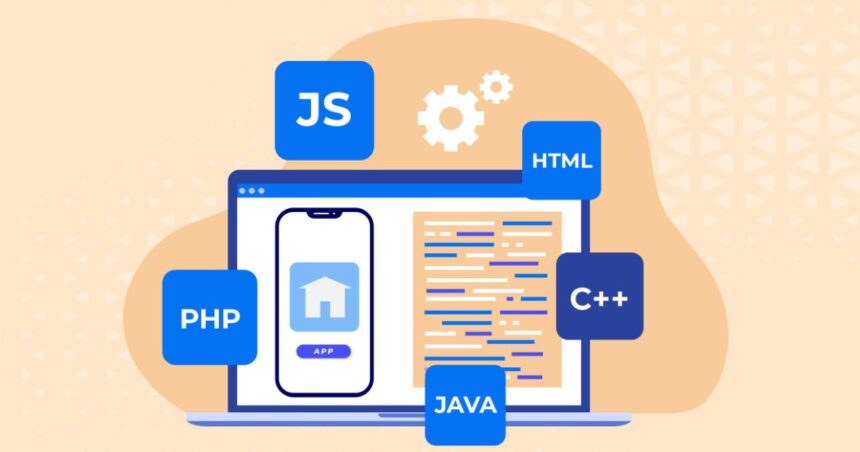With the world’s focus shifting toward sustainability, businesses are finding themselves at the intersection of innovation and responsibility. Energy app development has emerged as a powerful tool, enabling companies to drive green initiatives while tapping into a growing market of environmentally conscious consumers.
From apps that monitor energy usage in real-time to platforms that connect users with renewable energy sources, the possibilities are endless. For founders and decision-makers, this isn’t just about going green—it’s about staying relevant in a market that increasingly demands accountability and innovation.
In this blog, we’ll explore how energy apps are paving the way for a greener, more sustainable future and why investing in this space is both a smart and impactful decision.
Why Energy Apps Matter for Businesses
For decision-makers, investing in energy app development isn’t just about adopting the latest technology—it’s about creating value for both the business and the planet. Here’s how energy apps can make a tangible difference:
- Cost Efficiency: Energy apps provide real-time insights into energy usage, helping businesses identify waste and reduce operational costs. Imagine knowing exactly where your energy is being wasted and fixing it before it becomes a larger expense.
- Customer Engagement: Modern consumers are more eco-conscious than ever. Energy apps that empower users to track their energy consumption or switch to renewables build trust and loyalty. Offering transparency isn’t just good ethics—it’s good business.
- Sustainability Alignment: With governments and organizations pushing for net-zero emissions, energy apps make compliance easier. They also allow businesses to actively participate in the green economy by showcasing their commitment to sustainable practices.
- Competitive Advantage: Standing out in the market often means demonstrating innovation. Custom energy apps let your business lead the charge in green technology, differentiating you from competitors who lag behind.
By addressing these critical areas, energy apps become more than just a tool—they’re a strategy for growth, customer retention, and future-proofing your business.
But what exactly makes an energy app effective? It’s not just about tracking energy usage—it’s about delivering features that solve real-world problems and drive measurable outcomes for businesses and users alike. Let’s explore the key features that make energy apps a game-changer.
Key Features of Effective Energy Apps
Energy apps are more than just tech tools—they’re enablers of smarter energy management and greener choices. Let’s break down the features that make these apps a must-have for businesses striving for efficiency and sustainability:
1. Real-Time Energy Monitoring
Imagine having a live feed of your energy usage at your fingertips. Real-time monitoring does exactly that. Businesses can track energy consumption across devices, locations, or departments, pinpointing inefficiencies instantly.
Example: If a piece of equipment is drawing more energy than usual, the app can alert you before it leads to costly downtime or wastage.
Why it works: When you know where the energy is going, you can adjust in real-time, saving costs and reducing waste.
2. Predictive Analytics
What if you could predict your energy needs before they happen? AI-powered predictive analytics analyzes historical energy usage and forecasts future consumption patterns. This feature helps you plan for peak times and avoid unexpected surges in energy costs.
Example: A retail chain can predict high energy demands during seasonal sales and proactively adjust usage or negotiate better energy rates.
Why it works: Being prepared means fewer surprises and smarter budgeting.
3. Renewable Energy Integration
Switching to solar, wind, or other renewable sources doesn’t have to be complicated. Energy apps make the process seamless, helping businesses access clean energy options and track their usage.
Example: An app could suggest the best times to draw from renewable sources based on weather forecasts, ensuring maximum efficiency from solar or wind installations.
Why it works: Supporting renewables isn’t just good for the planet—it’s increasingly what customers and investors expect.
4. Custom Alerts and Notifications
Energy apps aren’t just for monitoring—they keep you in the loop. Custom alerts notify you of irregular energy usage, equipment malfunctions, or upcoming maintenance needs.
Example: If an HVAC system starts consuming unusually high energy, the app alerts your facility manager instantly, saving time and costs on diagnostics.
Why it works: Proactive notifications mean fewer emergencies and smoother operations.
5. Energy Usage Reports
Numbers are just numbers unless they tell a story. Energy apps generate detailed reports that break down consumption patterns, identify areas for improvement, and support sustainability goals.
Example: A manufacturing plant can use these reports to compare energy use across different shifts, identifying the most energy-efficient times to operate.
Why it works: Insightful reports empower decision-makers to optimize energy strategies and achieve measurable savings.
6. User-Friendly Interface
Energy data can get overwhelming, but a well-designed app makes it easy for anyone to understand. Intuitive interfaces ensure that both energy experts and everyday users can navigate the app with ease.
Example: An app might present energy trends as simple graphs and color-coded dashboards, making it accessible even to non-technical users.
Why it works: Simplicity drives adoption, ensuring the app becomes an integral part of daily workflows.
These features aren’t just bells and whistles—they address real-world energy challenges head-on. The result? Better efficiency, smarter decisions, and a step closer to a sustainable future.
Not sure what features your energy app needs?
Now that we’ve covered the must-have features, it’s time to see these apps in action. Let’s explore how they’re being used across industries to make a tangible difference.
| Use Case | Description | Benefits |
| Smart Energy Management | Real-time monitoring and control of energy usage across facilities or devices. | Reduces energy wastage, lowers costs, and optimizes resource allocation. |
| Renewable Energy Integration | Seamless integration of solar, wind, or other renewable energy sources into energy systems. | Supports sustainability goals, reduces dependency on traditional energy, and cuts carbon emissions. |
| Predictive Maintenance | Uses AI to predict equipment failures and schedule maintenance before issues occur. | Minimizes downtime, extends equipment life, and reduces unplanned repair costs. |
| Energy Cost Optimization | Tracks and analyzes energy usage patterns to avoid peak charges and reduce overall expenses. | Helps businesses save money by shifting consumption to off-peak hours and using efficient setups. |
| Carbon Footprint Tracking | Monitors emissions data and provides actionable insights to reduce environmental impact. | Helps businesses align with environmental regulations and meet sustainability commitments. |
| Smart Grid Management | Balances energy supply and demand using IoT and AI technologies. | Improves grid stability, reduces outages, and ensures efficient distribution of energy. |
The Future of Energy Apps: Trends to Watch
Energy apps are not just tools for monitoring—they’re becoming essential for driving innovation, sustainability, and operational efficiency. Here’s a detailed look at the trends shaping the future of energy apps, incorporating key technologies like process automation and data analytics.
1. AI and Machine Learning Integration
Energy apps are becoming smarter with AI and machine learning. These technologies analyze complex energy usage patterns, forecast demand, and suggest optimization strategies. For instance, AI can predict peak usage times and adjust energy flows automatically, ensuring efficient consumption without manual intervention.
- Impact: Smarter energy allocation, reduced costs, and enhanced predictive maintenance capabilities.
2. Process Automation
Automation is transforming how businesses manage energy. Apps now automate repetitive tasks like adjusting thermostat settings, scheduling equipment downtime, or even generating compliance reports. This frees up human resources for higher-value activities and ensures precision in energy management.
- Impact: Lower operational costs, fewer human errors, and more streamlined workflows.
3. Data Analytics for Deeper Insights
With energy apps, data isn’t just collected—it’s transformed into actionable insights. Advanced data analytics helps businesses understand energy trends, detect inefficiencies, and make informed decisions. For example, analytics can reveal which machines consume the most energy, enabling targeted interventions.
- Impact: Better resource planning, real-time optimization, and long-term sustainability.
4. IoT-Enabled Smart Systems
The Internet of Things (IoT) is connecting energy apps to devices like smart meters, sensors, and appliances. This integration allows real-time monitoring and control over energy systems, making smart homes and businesses more accessible than ever. Imagine an app that turns off unused devices automatically, based on occupancy data from IoT sensors.
- Impact: Enhanced control, energy savings, and improved user experience.
5. Blockchain for Transparent Energy Transactions
Blockchain is reshaping energy markets by enabling peer-to-peer energy trading. Apps leveraging blockchain allow businesses and individuals to buy and sell renewable energy directly, bypassing traditional intermediaries. This creates a decentralized, transparent energy ecosystem.
- Impact: Greater access to renewable energy, reduced transaction costs, and a more sustainable energy grid.
6. Gamification for Consumer Engagement
To encourage energy-saving habits, apps are adopting gamification. Features like rewards, leaderboards, and progress tracking motivate users to reduce energy consumption. For example, businesses can incentivize employees with rewards for hitting energy-saving targets.
- Impact: Increased user engagement, behavior changes, and long-term energy savings.
7. Focus on Sustainability Metrics
Sustainability is no longer optional. Future energy apps will provide detailed insights into carbon footprints, renewable energy usage, and overall sustainability performance. These metrics help businesses comply with regulations and showcase their green initiatives to stakeholders.
- Impact: Improved compliance, stronger brand reputation, and alignment with global sustainability goals.
Consumer demand for green, reliable energy is reshaping how it’s created, distributed, and consumed. Codewave’s energy app development solutions leverage AI, data analytics, and process automation to help businesses tackle challenges and seize emerging opportunities in this evolving sector.
Conclusion: Shaping the Future of Energy with Smart Apps
Navigating the transformation in the energy sector requires a partner with proven expertise and a forward-thinking approach. With over 10 years of experience, Codewave has been helping businesses innovate through tailored solutions that blend energy app development with design thinking. By focusing on user-centric designs and cutting-edge technology, Codewave ensures solutions that not only meet your needs but also deliver measurable impact.




